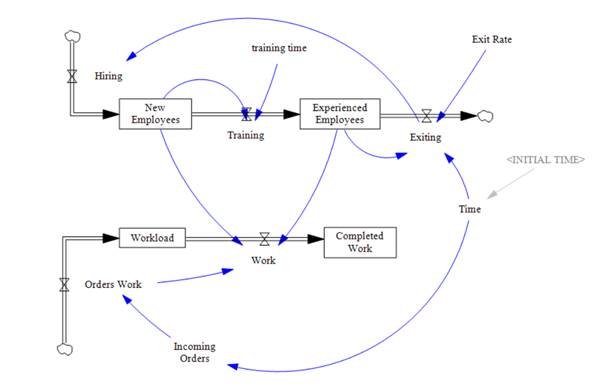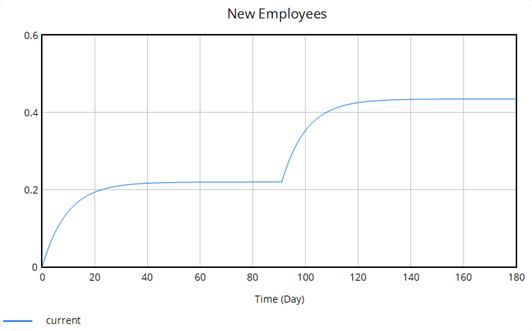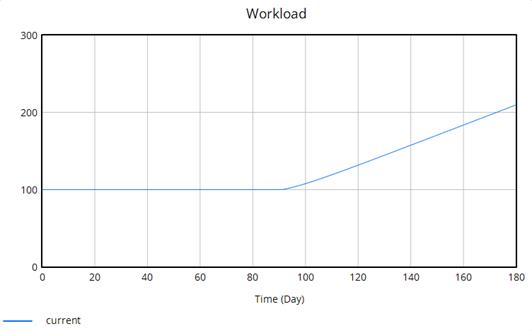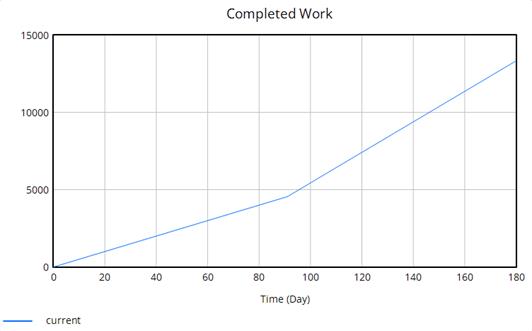The impact of employee turnover on workflow in a production team - Sabina Michno
THE IMPACT OF EMPLOYEE TURNOVER ON WORKFLOW
IN A PRODUCTION TEAM
1 INTRODUCTION
In a modern production environment, maintaining a stable and efficient workflow is crucial for achieving performance goals and ensuring high product quality. One of the primary factors affecting this stability is employee turnover the rate at which team members leave and are replaced by new hires. Frequent changes in team composition can slow down the production process and increase the burden on experienced employees. This study uses system dynamics modeling to investigate how employee turnover affects workflow efficiency, utilizing the Vensim software.
2 ASSUMPTIONS AND DESCRIPTION OF THE SIMULATION MODEL
The model assumes an initial workforce of 20 experienced employees, with new hires recruited at a rate equal to the departure rate. The training process lasts 10 days, transforming new employees into experienced ones. The workload starts with 100 orders, with an inflow of 50 orders per day until day 90, after which it increases to 100 orders per day. Productivity depends on the number of employees (5 orders per experienced employee, 2 per new employee), limited by the inflow of work. The departure rate is 0.2/180 before day 90 and 0.4/180 thereafter. Based on demand forecasts, 50 new orders per day are expected in the first half of the quarter and 100 orders per day in the second half. Due to employee turnover – 20% in the first half of the quarter and 40% in the second – new employees are immediately hired to replace those who leave.
Description of Model Components:
• Stocks:
– New Employees – number of newly hired employees;
– Experienced Employees – number of experienced employees;
– Workload – amount of work to be completed;
– Completed Work – amount of completed work.
• Flows:
– Hiring – recruitment of new employees;
– Training – training of new employees;
– Exiting – employee departure rate;
– Orders Work – inflow of work from new orders;
– Work – amount of work performed.
• Variables:
– Training Time – duration of training;
– Time – days;
– Incoming Orders – number of new orders.

Below are the key equations describing the relationships in the model:
• Exiting = IF THEN ELSE(Time<=90, (Experienced Employees * 0.2)/180, (Experienced Employees * 20)/40
• Work = 5 * Experienced Employees + 2 * New Employees)
• Training = New Employees / Training Time
• Incoming Orders = IF THEN ELSE (Time < 90, 50, 100)
3 MODEL SIMULATION AND PRESENTATION OF GRAPHS
After constructing the graph, the simulation was run, and the following were graphs generated, illustrating the dependencies of variables over time.





No Comments